UN COVER







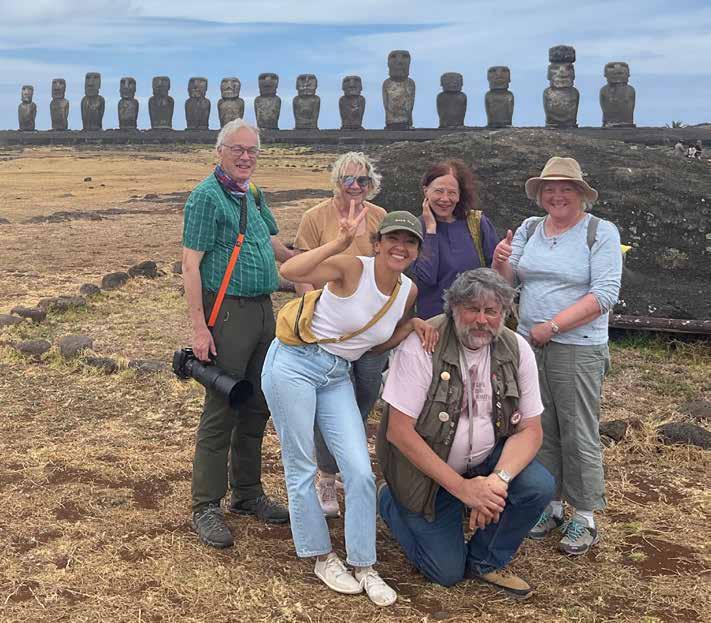
Welcome to the second edition of Andante’s newsletter UN COVER
Can I take this opportunity to thank all those who sent their feedback to our first edition, and following its success we are taking the opportunity again to bring to you any latest news, interviews, features and articles focussed on the world of archaeology and history.
This edition includes an extended in-depth interview with Professor Chris Stringer, one of the foremost physical anthropologists in the UK and Oliver Gilkes Favourites, one of our most popular Andante Guide Lecturers who has been leading tours for Andante for over 20 years. A special thank you as well to Barbara and Nigel Wood who have kindly shared memories of their travels and continued interest in history and archaeology. Along with our regular features including Did You Know?, recommended books to read and podcast, we hope there is something for everyone in this edition and do please keep sharing your feedback to help us shape and curate future editions.
Kate
Kate Winter EDITOR kate@specialistjourneys.comCONTRIBUTORS
FEATURES, ARTICLES AND INTERVIEWS:
Professor Chris Stringer, Dr Eireann Marshall, Oliver Gilkes, Mary Reynolds and Barbara & Nigel Wood

If you have not done so already, then take a look at our 5 brand new tours, all of which come with carefully crafted itineraries designed to stimulate, inform and entertain you Roman Lusitania – 1st September
• Bulgaria – 29th September
• Cruising from Catalonia to Andalucia – 30th October
• Byzantium & Ottoman Istanbul – 4th November Vienna – 4th December
Where we have reached full capacity on several of our 2024 departures, we have added the following dates to allow the opportunity to enjoy some first-rate archaeology.
• Wild Thrace – 17th September
• Pompeii, Herculaneum & Classical Campania – 23rd September
• Algeria – 13th October
• Prehistoric Malta & Gozo – 4th November
• Tunisia – North & South – 18th November
Contact us to register your interest in the following tours due to go on sale soon, departing in November this year.
BRAZIL
Join Dr Paul Bahn in exploring some of South America's spectacular rock art hidden among the steep cliffs and secluded valleys of the Serra da Capivara in northeast Brazil. The tour will also include a trip to the Pantanal, one of the most biologically rich environments on the planet.
Tour date: 11th – 26th November 2024
MEXICO
Follow in the footsteps of lesser known but fascinating cultures of Ancient Mexico. We explore the legacy not only of the Aztec & Maya but also the myriad of other peoples: the Totonacs, Zapotecs and Mixtecs.
Tour date: 18th November – 3rd December 2024
We are delighted to welcome the following experts leading Andante Travels tours in 2024 or 2025.


Ken Murphy
Ken is a field archaeologist with over 45 years’ experience. He has worked on numerous field and desk-based projects since 1979.
Ken is leading our Archaeology & Wildlife of the Pembrokeshire Coast tour.
Tom Abbott
Tom is an art and architecture historian whose expertise is wide ranging, from the Baroque and Rococo, to modern and contemporary.
Tom is leading our tours to Vienna.
MARKETING AND DESIGN
Jon Woods and Alex Gale

Dr Katya Melamed
Katya is a Bulgarian archaeologist who enjoys an enviable reputation for her longstanding research and excavation work throughout the country.
Katya is leading our tours to Bulgaria.

Roman Hispania was known as the major producer and exporter of olive oil from Republican times into the Empire. Recent studies on lead ingots, however, have shed light on the importance of Baetica and in particular the city of Cordoba, in producing and exporting metals. Work on the Maghreb-Europe Gas Pipeline, which began in the 1960’s, unearthed three lead ingots near the Dona Rama site. These ingots had not been studied until recently when a team from the University of Cordoba investigated their chemical composition. The team cross-referred this with work done by the University of Toulouse, which has studied metals found in shipwrecks from the Roman era across the Mediterranean.
The findings revealed that the ingots were produced near the Dona Rama site where they were found. They are a regular shape, prisms (like a large Toblerone bar) and
weigh between 24 and 32 kgs. This uniformity points to large-scale processing, which is further confirmed by marks on two of the ingots. The initials ’S.S.’ are stamped on them, standing for Societas Sisaponensis. To have marked the ingots with the mining company’s initials shows that they were destined for export, which is further supported by the work from the French team since more than half the ingots they have catalogued have been shown to come from that mining area around Cordoba. Lead was an important resource in Roman times, with widespread uses, not just in water pipes but also in the production of many everyday items including spoons. The investigations into these ingots point to sophisticated industrial production at Dona Rama, not just in terms of mining but also processing the ores to prepare them for export across the Roman world.

“The findings revealed that the ingots were produced near the Dona Rama site where they were found. ”
The Villa of the Papyri in Herculaneum has always been seen as a trove of unattainable treasure. It houses the library of a philosopher, Philodemus, and over 1,800 scrolls have been found here. These carbonized papyrus scrolls have suffered attempts to read them in the past, any examination producing only dust. Of late, however, cutting edge scientific techniques have been used to virtually unroll some of these scrolls and show what was written. One such scroll has been a History of the Academy (Plato’s philosophical school) written by Philodemus himself. While x-rays had been able to decipher a deal of this work, more sophisticated techniques and the application of AI have allowed Costanza Miliani at the Consiglio Nazionale delle Ricerche to read 30% more of what has already been made out. This has given us exciting new information about Plato, the philosopher and pupil of Socrates. Other sources attest that he was enslaved by the tyrant of Syracuse when he journeyed there in 387 BCE; however, Philodemus gives a much earlier date of 399 BCE. Furthermore, he has also given us a precise location for the philosopher’s burial place: in the Academy itself. Such details are exciting in their own right but also for showing us that much of the treasure from the Villa of the Papyri may soon come into our grasp.

Work carried out by the Centre Camille Jullian, led by Dr. Laetitia Cavassa, is promising to shed light on life in Pompeii before the Romans. When visiting the archaeological site today it is easy to forget that the town was strategically positioned on the river Sarno and the coast of the Tyrrhenian Sea. Such a position was attractive to settlements and so it is no surprise that it was a thriving town before the Romans, being originally an Oscan settlement and later a Samnite one. While the eruption of 79 AD has furnished us with uniquely detailed archaeological evidence it has been more difficult to find and disentangle evidence of pre-Roman remains.
“Beyond a partition wall was an unusual tomb; while other tombs had been found in this small area, this one is possibly the oldest to have been excavated, dating from the 4th Century BCE.”
Cavassa, a specialist in pottery had been working on workshops in the area approaching the Villa of the Mysteries from the Herculaneum Gate when a startling discovery was made next to one of these. Beyond a partition wall was an unusual tomb; while other tombs had been found in this small area, this one is possibly the oldest to have been excavated, dating from the 4th Century BCE. The person buried was a woman and the selection of grave goods include twelve red-figure Attic pottery vases. The contents are yet to be identified and studied further but include foodstuffs and cosmetics.
While the Roman town of Pompeii incorporated and built over its Samnite past, this tomb is an anomaly; it had not been built over, in spite of its age. In this way the tomb is an exciting and valuable resource in enlightening us further about Samnite culture before the First Century BCE. It also raises questions about the ways in which the settlers in Roman Pompeii interacted with their Samnite forbears.

Archaeologists working on the site of the ancient city of Side on the south western coast of Turkey, have just uncovered a 2nd century BCE mosaic depicting Calliope, the muse of epic poetry. The mosaic is surrounded by a meander pattern and consists of geometric patterns with an emblem of Calliope in the middle. The city of Side, located in the province of Cilicia, was famed in antiquity for being a major centre of piracy, becoming prosperous for its important slave trade. The mosaic, which was in a room of a house, was produced around the time when Marcus Antonius the Orator, the grandfather of Mark Antony, defeated the city in an attempt to curb the piracy which was threatening Roman trade. The quality of the mosaic and its depiction of a muse demonstrate the wealth of its owner, as well as his desire to be seen as erudite. It appears that no matter how Cilicians earned their wealth, they wanted to be associated with Hellenic culture.
The discovery was made by a team of 150 archaeologists, architects and restorers who are working on The Cultural Heritage Road Project, which aims to uncover and restore archaeological sites in Antalya in order to develop a tour of ancient sites in the region. These sites include Syedra, Alanya Castle and Perge, as well as Olympos and Phaselis and is focused on the wonderful city of Side. The project, which has been allocated an initial tranche of 600 million Turkish Lira, has so far restored the gymnasium and has uncovered parts of an aqueduct near the monumental fountain area, which is not far from the mosaic.

Across the Mediterranean we have found many shipwrecks from the ancient world, giving us valuable information about life at those times. A newly studied wreck has given us unusually detailed information about trade and sailing in the later Roman age. Just off Mallorca a ship sailing from Carthago Spartania sank in the 4th Century AD and was quickly covered with sand and sediment, preserving a good deal of organic material. The cargo is in line with other ships that have been studied: olive oil, wine, garum and olives (possibly preserved in a wine reduction sauce). The loading of the craft had been skillfully and carefully done to maximise the load being transported.
Three features stand out as unusual with this find. The amphorae are almost all marked with painted tituli, labels and maker’s marks decoratively done. Among these are a number with a chrismon, a chi-rho symbol, which could suggest that the production of this commodity was run by a Christian community.
In contrast to Christianity is evidence of a long-standing pagan Roman practice of protecting a ship. At the base of the mast,
beneath a small step, was a coin, whose presence was intended to safeguard the ship and its crew. The coin itself is from the town of Siscia (modern day Sisak, in central Croatia), evidence of the mobility of trade within the Empire. The preservation of so much organic material has shed light not only on the cargoes carried but also on the ways in which they were carried. The amphorae, more than 300 of them, are carefully packed and we have found plant materials, many of them vine shoots, being used as matting to protect not only the amphorae from knocking against each other but also from damaging the hull itself of the craft.
“Three features stand out as unusual with this find.”

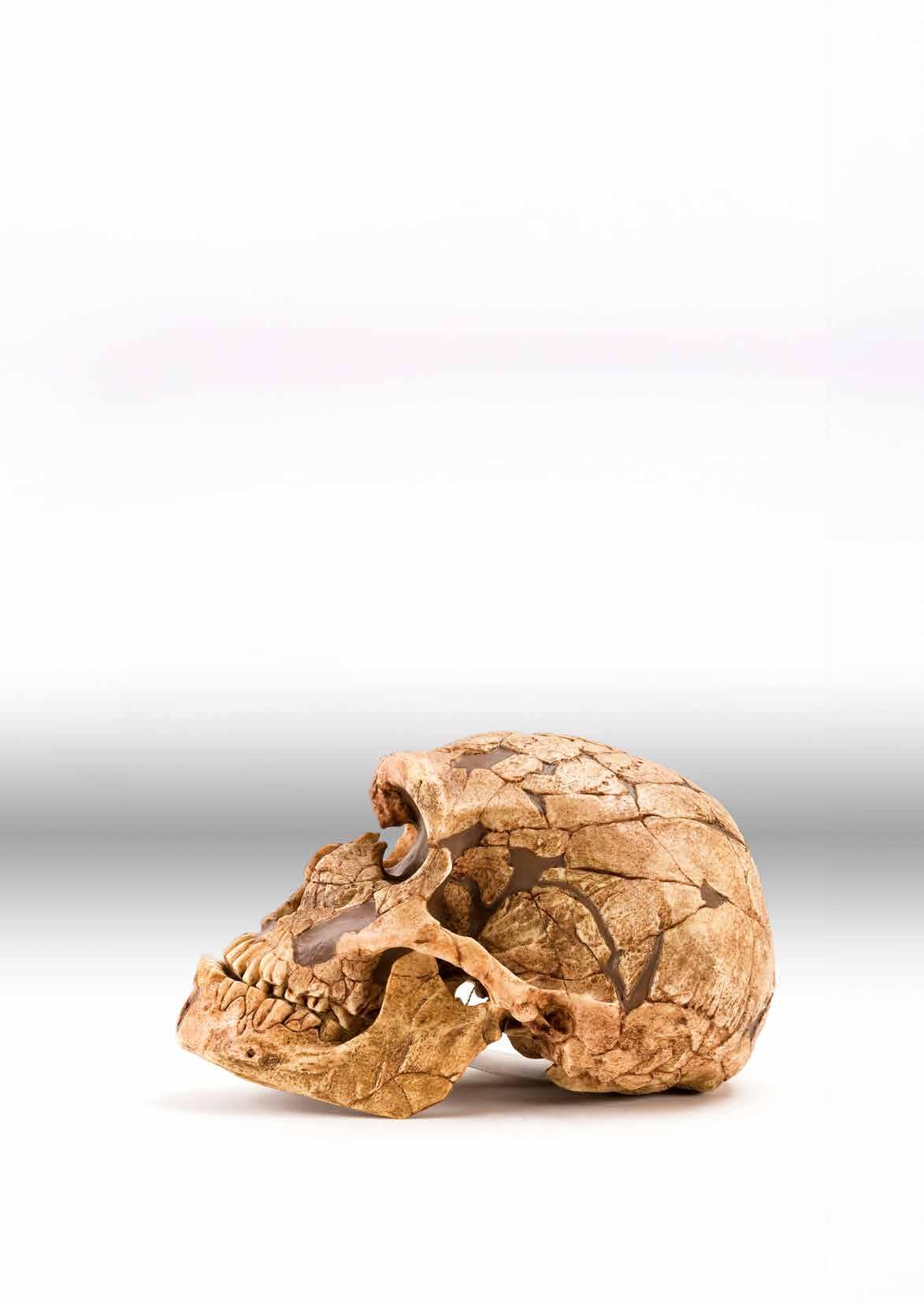
Recently awarded the prestigious Huxley Medal by the Royal Anthropological Institute, Professor Chris Stringer is one of the foremost physical anthropologists in the UK. He has spent the last 50 years researching at the Natural History Museum, focusing on the origins of Homo sapiens and our closest relatives, in particular the Neanderthals. He is a key proponent of the Out of Africa theory, which argues that Homo sapiens developed in Africa before dispersing to the rest of the world. Professor Stringer has also been instrumental in helping to uncover evidence of the earliest humans in Britain, working for years on the Ancient Human Occupation of Britain.
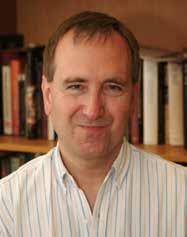
What has your research focused on?
I have been in the field for more than 50 years and the focus of my research has inevitably evolved somewhat. My PhD focused on the Neanderthals and how they were related to us and whether they were our ancestors, and from there I expanded into looking at the wider origins of Homo sapiens. By the mid-1980s I was exploring how Homo sapiens evolved in Africa at the beginning of what came to be known as the Out of Africa theory. At the same time, starting in the 1970s, colleagues at the Museum and I started excavating British sites looking for fossils and stone tools, examining evidence of human ancestors in Britain, which culminated in 2001 with the research programme called the Ancient Human Occupation of Britain project, which I led for 12 years, and which was funded by the Leverhulme Trust in 3 phases. This looked at reconstructing the pattern of human occupation in Britain, how many colonisations there had been and what was controlling the presence or absence of people on this island. By the time AHOB finished in 2012 we had been able to map at least 10 separate occupations, 9 of which ended when the people concerned vanished, in most cases because of severe changes in the climate; after that we were lucky enough to get further funding from the Calleva Foundation, which allowed us to carry on some of that work and take it in different directions. All the while, I have been interested in dating the archaeological and fossil record. Obviously if you are reconstructing human evolution, you need to know how old the fossils are on which you are working. So I have been involved in radiocarbon dating work and collaborating with Rainer Grün and colleagues on other dating methods such as Electron Spin Resonance and Uranium-series; in fact, we have just published a big review paper on direct dating of human fossils using U-series. So those have been the main areas of my research.
Who are some of the academics who have most influenced you?
During my formative years, Don Brothwell, who was at the Natural History Museum when I came here, was a great mentor for me. He was a big influence, even though he left the museum shortly after I arrived – sadly, he largely left the field of paleoanthropology and switched to archaeological science. He was a big influence as he was so open-minded and had such broad interests; he was open to lots of different ideas and new techniques of study, which set me a wonderful example. He was the one who really mapped out my PhD thesis and suggested what I should be working on.
Professor Bill Howells from Harvard was very generous to me right from the beginning of my PhD, helping me out although he was one of the foremost experts in human
evolution. He made all his cranial data, all his measurements on recent humans, available to me, which was a treasure trove for my project. His data of measurements on thousands of recent human skulls from all over the world became my fundamental point of comparison for early humans, both Neanderthal and sapiens.
Clark Howell was another important American paleoanthropologist, working at Berkeley in California. He was someone who worked very widely and we studied the Petralona cranium together for a paper with a Greek collaborator in 1979. He was someone who set an example for me for working so broadly, which is what I have tried to do as well. He was interested in fossils and dating them; he was interested in the archaeology, and excavated sites. He also networked widely with people from many different specialisations.
Peter Andrews joined the Natural History Museum in 1974, having worked in East Africa previously; he arrived after me, but was a few years older. He was a big influence on me too, and on my thinking. We wrote one of the earliest big papers on the Out of Africa theory in 1988 for the influential journal Science. He was instrumental in giving me confidence; I had a definite inferiority complex early on (what we now know as Impostor Syndrome), and he reminded me that if I believed in something, I should say it. Our ideas were attacked very strongly and even viciously at times; some of it was personal, so I needed to have the courage that Peter helped give me. A lot of people didn’t like the Out of Africa theory; there are still some who don’t.
More recently, it’s the younger generations coming through who have been influential. Katerina Harvati, who is now based in Tübingen in Germany, uses geometric morphometrics which is a big advance on the kind of work I was doing early on when I measured skulls with calipers and tape measures. Instead she captures shapes in 3 dimensions to study and compare the fossils. I’ve worked with her for the last 15 years on several different fossils, and we’ve published a number of papers together.
Eleanor Scerri has helped to transform the Out of Africa theory towards a pan-African model, suggesting that Homo sapiens didn’t just evolve from one area in Africa but more broadly across the continent. I suggested that idea in passing 20 years ago, but Ellie has
Continued over...
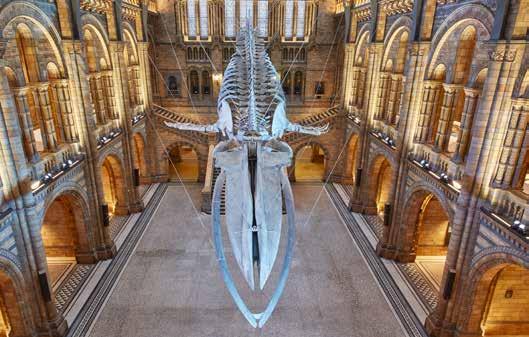
What works have you published?

I have published about 400 works, including articles in journals and chapters in books , which includes that Science paper of 1988. I have also written a number of books, among which recently ‘The Origin of Our Species as ‘Lone Survivors’ because the publishers wanted to avoid the direct reference to Darwin evident in the original title in order to bypass the anti-evolution audience in the US. As an aside, I have publicly debated with people who argue against evolution, including the late Duane Gish, perhaps the most famous American creationist, who wrote a book called ‘Evolution: The Fossils Say No!’ We had a debate in London which included a large audience of creationists, and I spent a painful month reading creationist literature to prepare for it. I don’t think you can change the mind of such people and ultimately, debating with them is futile; but if anyone is doubtful about human evolution, I am happy to show them the evidence. Ironically, I think that people like Gish, who argued that Noah’s Ark really existed about 4,000 years ago, believe in evolution more than we do in that they have to account for the development of all of the diversity across the natural world in that brief period of time, whereas I’m considering it took many millions of years! My most recent books published by the Natural History Museum include ‘ Louise Humphrey ,which I think (rather modestly!) is one of the best general books on human evolution. Another recent NHM book ‘Britain: One Million Years of the Human Story,’ written with Rob Dinnis, includes overviews of the results of the whole AHOB project.
 Images left to right: Neanderthal skull | Professor Chris Stringer | Hintze Hall Blue whale & Natural History Museum exterior ©Trustees of the Natural History Museum
Images left to right: Neanderthal skull | Professor Chris Stringer | Hintze Hall Blue whale & Natural History Museum exterior ©Trustees of the Natural History Museum

collaborated with many colleagues, including me, to solidify the idea with much more data. On the DNA side, Mateja Hajdinjak from Croatia, now based in Leipzig, and I have written a few papers together and she is one of the people taking DNA studies of early humans like Neanderthals to the next level.
Unfortunately, there were very few senior women scientists when I began my studies, and so my early mentors were mostly men. But now there are many more women who are leaders in their fields, and able to inspire the next generation of researchers.
What are some of the proudest moments of your career?
That Science paper I wrote in 1988 with Peter Andrews right at the start of the Out of Africa theory is still my most cited paper. We faced a lot of criticism at the time, but to still see it cited so much is one of my proudest moments.
Around the same time, in 1987 I co-organized an international meeting with Paul Mellars, who was a senior archaeologist at Cambridge, which came to be known as the Human Revolution Meeting, and which pitted different developing models about the origins of modern humans against each other. So initial versions of the Out of Africa theory were presented, along with the early work on DNA from people like Cann, Stoneking and Wilson (the so-called ‘mitochondrial Eve theory’), as well as what archaeology was telling us about early modern humans. The multiregional model was, of course, the strongest competitor to the Recent African Origin model and there were proponents of that model there as well. So the meeting was very influential, producing 2 big books of the papers presented, and I am proud of it because it really helped to move the field on. It gave a statement about where we were with modern human origins at the end of the 1980s, and also what we still needed to learn. What is great is that a lot of those papers are also still being cited now.
In the more recent past, running AHOB for 12 years was a great privilege. It was fantastic what we were able to do, more or less doubling the age of the oldest known human occupation of Britain. When we began the project in 2001, the oldest humans in Britain discovered up to that point were the ones from Boxgrove, about 480,000 years old. By the time we finished the project, we had the occupation of Happisburgh in Norfolk which gave us stone tools and even footprints which were about 900,000 years old!
In the last couple of months, a conference was held in London by the Royal Anthropological Institute, the Natural History Museum and colleagues in Cambridge, who got together to organise a meeting in
my honour. The 2-day meeting was wonderful, with talks by many of my friends and collaborators; the only downside was that I had to give the closing speech in order to get the Huxley Medal! A lot of people only get this sort of recognition after they’ve gone, and don’t get to hear such nice things said about them while they are still alive.
I learned early on not to be too dogmatic and also not to get too personal in all these disputes, which unfortunately does happen, as people identify so closely with their ideas. You have to be prepared to change your mind when you’re wrong, which is a problem with many researchers – we are still human beings, after all! When interbreeding between Neanderthals and sapiens was demonstrated, I had to re-evaluate some of my ideas rather than deny the evidence. Although I had long argued that Neanderthals were a separate species, I always thought it was possible that there was a little interbreeding, as can happen in closely related species today. But I didn’t think we would ever find the evidence of it today; I thought that it wouldn’t have been part of their normal behaviour, and it would have been trivial in the big picture. That was my view up to 2010, which was when, of course, the first high quality Neanderthal genome was produced, showing that most of us today have Neanderthal DNA, and how significant the interbreeding was. I had to say I got that one wrong. I have had to do that a few times since. With Homo heidelbergensis, I had the view for a long time that it was the common ancestor of us and Neanderthals about 500,000 years ago. Now I think that’s unlikely, and that the common ancestor lived further back, and did not look like heidelbergensis. That’s partly a product of my being around for so long, seeing so much new data and so many changes in thinking. And there is no sign of things slowing down, especially with ancient DNA, where there is increasingly wonderful work - it’s incredible and sometimes difficult to keep up with. The fossil record can’t possibly match that - we might get an important new fossil every 6 months or so, but we are getting an important new DNA paper just about every week!

What are some of the challenges which face palaeontology/archaeology today?
One of the main problems at the moment is the lack of funding; we are in difficult times economically, with budget limitations. As a result, departments are closing down or contracting – not only in the UK but in the US and across the world. It is also a lot more competitive now with the dearth of funding, as more and more people are fighting over smaller and smaller pots of money.
The politics of the home countries as well as the fieldwork countries hasn’t always helped. Here in Britain, Brexit has affected funding that we have, and it has been more difficult to collaborate with our European colleagues because British scientists have met obstacles in applying for European funding. In some countries there is also a bias against evolution. In India, for example, the government has been adopting what might be called creationist positions and is trying to control what is being taught in schools; of course the problem also exists in some States in America, where certain education authorities try to censor school textbooks that teach about
evolution. In some fieldwork countries, politics and instability have disrupted excavations and fieldwork, for example in Africa, Iran, Iraq, Afghanistan, Lebanon and Syria where field programmes to search for early human fossils have been hindered. There is also a problem of bias in the fossil record, which is something that often gets forgotten. Our fossil record is patchy: we have very good evidence from east Africa, because of the Rift Valleys which open up landscapes and you get these big depositional basins where fossils collect, and you can go and find them. In South Africa there are limestone caves, which act like sediment traps that fossils fall into and are preserved. However in many parts of Africa, you don’t have those environments that preserve fossils, so we have almost none from the centre of Africa, as well as large areas of west and southwest Africa. We have stone tools from these areas, so we know ancient humans were there, but we lack fossils to tell us what they looked like, and which species they were. Outside of Africa, we have the same situation in many areas. In the Indian subcontinent, we have archaeological remains that tell us early humans were all over the continent, but we only have one important human fossil, a partial skull from the Narmada river valley, dating to about 300,000 years ago; we aren’t even sure what species it represents. There are very few fossils in southeast Asia and, although there are many from the island of Java in Indonesia, most other islands have nothing significant at all. We have those weird things from Flores in Indonesia and the Philippines, two very strange dwarf species that show us what we are probably missing. If we had more evidence from some of the other islands I’m sure we would have many more surprises to come. We are also missing fossils from big areas of Asia; obviously, we have crucial evidence from the Denisova Cave in Siberia but many other regions such as Mongolia, Pakistan, Afghanistan and Iran have so far offered very few human fossils; we only have one finger bone of an early human from the whole of Arabia. We need to encourage fieldwork in many of those places, though there is the whole question of politics getting in the way again. We talk about parachute science where the developed world drops off their experts to developing nations to collect fossil or genetic samples and then zoom off again, without involvement from the local community. So everyone needs to do better in engaging with local support right from the beginning of the projects and putting something back into those countries, helping them educationally and helping them build resources to develop their own science, so they can join in as equal or leading partners in these enterprises in the future.
It is also really important that we remain open-minded. For example, in the debate about the recent Out of Africa origin model, it has had to shift ground in that the idea used to be that there was probably a sudden origin of our species in just one area of Africa, probably east Africa. Now it’s difficult to point to any area to say that’s where Homo sapiens evolved. We have probably developed from different populations from many parts of Africa and over a longer period of time than previously thought. It was a more gradual process of assembling our species from different ancestral populations across the continent. How has the field of ancient palaeontology and/or archaeology changed?
We have talked about these fantastic new areas of investigation. So we have radiocarbon dating which has really improved; it has been miniaturized and you can now get results from less complete fossils and slightly older fossils. Obviously, the method depends on the preservation of radiocarbon and the further back you go in time the less there is to measure. So you need precise equipment to measure the tiny amounts in fossils that are 40-50,000 years old. The removal of contaminations has improved, meaning we can now better date fossils which have had things like glue put on them. The miniaturization of the process has really helped; in the old days, you had to drill a very big hole in fossils in order to perform radiocarbon dating, which was obviously not very popular with Museum curators! Now, however, dating can be carried out by drilling a small hole into a specimen, resulting in virtually no destruction. Then there is Uranium-series dating, about which Rainer Grün and I have just written a big review paper; this is a way of dating things directly from the Uranium that’s contained within them. It’s a method that has problems because bones and teeth – bone in particular - have open systems so when a fossil is buried, it starts to take up Uranium from the
ground water. The problem is that it’s an open system, so the uranium can continue to build up as it starts to decay. Also Uranium can be washed out, so you have to proceed very carefully. Rainer has also miniaturized the process so that fossils don’t have to be almost cut in half in order to study the uranium uptake. Now it’s miniaturized with laser ablation - just little pin pricks with a laser can allow you to date a fossil. So that’s been a big improvement. We also now have wonderful new ways to study the internal morphology that I couldn’t have dreamt of 50 years ago. Back then, we had rather crude X-ray techniques, but now we have CT scanning and micro-CT scanning where you can get really fine detail from a fossil non- destructively. You can even look at the incremental layers of a tooth and look at how it’s growing. With these revolutionary new techniques we can do things like study ear bones which were rarely seen before, as they are deep within the ear region of a skull. Using CT scanning, we have been able to reveal the shape of those bones and show that Neanderthals had different looking ear bones to Homo sapiens. This is something that has only been made possible because of techniques like CT scanning. Obviously, the biggest change in recent years has been in studies of DNA. Having the ability to get DNA from fossils dating back to 400,000 years, like the Sima de los Huesos bones in Spain. The oldest human DNA so far has been recovered from bone fragments there, which show they represent early members of the Neanderthal lineage. In the more recent past we have found a number of Neanderthal genomes which reveal complex interbreeding between ‘us’ and ‘them.’ There must have been several interbreeding events at different times. We also first learned about the Denisovans from their DNA, so now we know about an entirely new kind of human – neither sapiens nor Neanderthal. Looking at fossil proteins is going to be a growing field in the next 5 to 10 years. We know that DNA disappears with unsuitable conditions and time. DNA results as old as 400,000 years – such as those from the Sima de los Huesos - are a rarity. Most of the fossils whose DNA has been extracted date to 100,000 years or less. But proteins can last for millions of years in fossils; so proteomics, looking at fossil proteins, is a new and developing field which is going to make a big impact in the future.
We are also now able to extract DNA from sediments, which captures DNA from where early humans have perhaps even just relieved themselves against a cave wall or such like. So you don’t even need bones and teeth to get DNA now. Denisova Cave is a good example where they now have more DNA from the sediment than from the fossils! That’s something that’s also been successfully applied to caves in Spain. We are working on finding Neanderthal DNA in British cave sites where their stone tools are preserved and are hopeful of finding the first evidence of them from the sediment.
The work on DNA is great but also so complex; you have maybe a 5-page summary paper in Nature or Science followed by 100 pages of supplementary data with all of the complexities. I am not a geneticist and have only a limited ability in that area, so have to work closely with geneticists who put things in sometimes simpler language so I can understand some of the more complex arguments. Younger generations are undoubtedly better able to cope with this than people who have been in the field as long as I have! I was fortunate to come into paleoanthropology when I did, because so little was known then, and much of what we thought has now been corrected through continuing scientific discoveries. It is just fantastic to see how much the field has evolved in the 50 years or so that I have been involved. It is almost unrecognizable, and that evolution in our knowledge will continue!
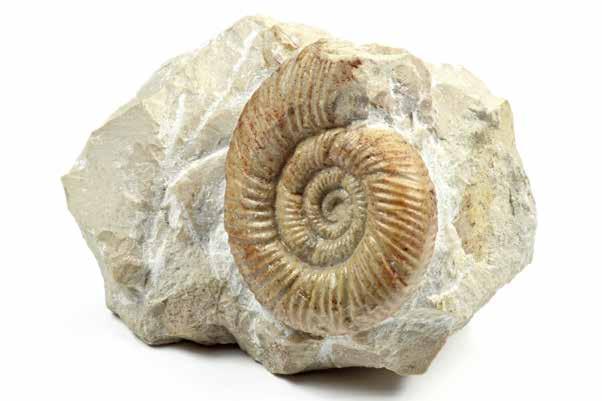
To register your interest in booking onto this exclusive tour, please contact our Specialist Travel Executives on 646-802-1521 Join Professor Chris Stringer in July 2025 on a tour exploring two of the most important and cutting edge archaeological sites in Britain, posing questions about the nature of the earliest humans to inhabit Britain. We will be visiting Swanscombe Heritage Park to consider the remains of a 400,000 year old female, as well as numerous hand axes found there. After touring Down House, where Darwin wrote the Origin of Species, we have a private visit of the Natural History Museum where Professor Stringer has spent most of his career. Lastly, we have a special visit to the ongoing excavations at Barnham in the company of Professor Nick Ashton, Curator at the British Museum, who is investigating a clay pit which has revealed a number of stone tools and animals bones dating to 400,000 years ago.




The 19th century Danish scholar Chrisian Juergensen Thomsen was the first scholar to divide periods of prehistory according to the materials that were used, namely the Stone, Bronze and Iron Ages. The period in history in which bronze was first exploited, the Bronze Age, occurred in different centuries in diverse parts of the world. In the Balkans, the Bronze Age began in the 5th millennium, while, in Mesopotamia, this happened around 3500 BCE and in the Greek world shortly thereafter. In contrast, the Bronze Age only began in the British Isles around 2100 BCE and in Japan in 300 BCE.
The production of bronze, which is an alloy of copper and tin, required the ability to smelt copper at the relatively high heat of 1085 degrees Celsius and to mix it with tin at just the right amounts, namely around 12% tin and 88% copper, though other materials, such as zinc, aluminium and arsenic were sometimes added. The manufacture of bronze also required access to copper and tin ores, which were not common and not found together. All of these elements had to come together to produce tools and objects never before envisaged which made the Bronze Age a period of invention and transformation.

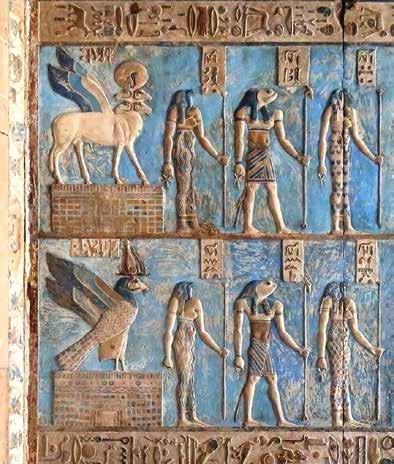
The manufacturing of bronze was vital for the development of the wheel, in particular wheeled vehicles. To be sure, the invention of the wheel didn’t happen all at once in the Bronze age. Cultures in the Neolithic period used rollers to ease the transport of heavy and bulky items and the step from roller to wheel is not exponential. There are also examples of wooden wheels from the very beginning of the Bronze Age, showing that this technology existed in the Neolithic period. However, the oldest example of a wooden wheel that has been found, dating from the mid-4th Millenium B.C. has clear evidence of its being significantly inferior to examples that were later developed. In particular, the hole in the middle of the wheel, where the axle was inserted, is square, which indicates that the axle and wheel were unable to move independently of each other. This technique of making a wheeled vehicle by resting a platform on axled wheels had been in use for some time and while improvements were made, they always had the same problem of friction since wheel and axle still acted as one piece. One solution for reducing the friction was to shrink the size of the axle in terms of its diameter; but this led to smaller, narrower vehicles. It is clear that cultures in the Neolithic and early Bronze Age were aware of the problem but did not have the means to solve it until the use of metal tools in the Bronze Age. The key was to have a circular hole in the wheel where the axle joined. The development of metal tools allowed craftsmen to shape and smooth the end of an axle to fit snugly into the hole they had made in the wheel. Such a smoothness minimized friction, which was improved by the addition of animal fats as a grease. This allowed the production of larger, stronger axles that would be able to take a heavier load. Furthermore, since the wheels on the same axle could move independently of each other the vehicle was much more manoeuverable and better able to travel across uneven ground. The consequences of such wheeled vehicles in the fields of agriculture and warfare were fully exploited, giving impetus to an agricultural revolution and the use of chariots in battle.
One of the most significant contributions of the Bronze was the development of writing systems, something essential for the running of complex societies and for the forming of relationships between states. Proto-writing systems, which conveyed basic ideas through pictograms, may have arisen as early as the Upper Paleolithic. Most notably, in Mesopotamia, with the advent of pottery, basic information about goods and amounts were recorded on clay tokens. Cuneiform, a writing system based on wedge shaped impressions made on clay, developed from these early pictograms and appears to be the first writing system. Adapted first to convey Sumerian, it was later adapted to express a variety of languages from Akkadian, Elamite and Luwian to Hittite. This logo-syllabic script developed from around 3300 BC, when it was made up, for the most part, of pictograms. With the passage of time, the script became complex and less ambiguous, becoming more phonological and less reliant on pictograms.
Given the close ties between Egypt and Mesopotamia, scholars had long argued that Egyptian hieroglyphs had developed form cuneiform, though it is now thought, on the basis inscriptions from Abydos, that the language systems in Mesopotamia and Egypt developed independently of each other. Both regions, which were burgeoning in the 4th millennium, invented writing systems because they were responding to the same need for better communication which could be conveyed over long distances. Indeed, the development of the writing systems may have occurred in the Bronze Age because the exploitation of copper and tin mines required the establishment of complicated networks across vast distances, necessitating the recording of better accounts and clearer correspondence between disparate peoples.
As a result of the astonishing amount of trade and diplomacy that developed by the Late Bronze Age, the period saw the rise of the first lingua franca, Akkadian, a language which facilitated relationships between the five major kingdoms of the epoch, namely Egypt, the Hurrians, Assyrians and Kassites in Mesopotamia, and Hittites in Anatolia. With the inevitable struggles for supremacy that ensued amongst these powers, the need to develop diplomacy became paramount and Akkadian fulfilled this role, reaching its height in the so-called Amarna period (fourteenth century BC). The foundations for this had been laid earlier as the cuneiform script of Akkadian began to be adopted by neighbouring peoples. Tablets from across Mesopotamia present the same text in Akkadian and local languages. Many of these texts are administrative records and letters while legal texts and treaties are solely in Akkadian, even in non-Akkadian speaking areas. The development of a lingua franca allowed the development of internationalism, namely the forging of closer ties between the world’s first empires, which arose partly as a result of the increased prosperity through the trade in bronze. Shifting alliances between major powers saw figures who had been trained in bilingual scribe schools taking part in the increased diplomacy. We have letters that even mention names of interpreters that particular kings suggest should take part in their envoys’ missions to other kings. This diplomatic activity has left us with evidence of early rules for the waging of war: for example, there had to be a clear declaration, together with details of the ways in which diplomacy had failed, gods were called upon and there were rules on conduct in battle. The Bronze Age also witnessed the signing of the first peace treaty, the so-called Treaty of Kadesh between the Egyptian and Hittites of 1259 BC, which was originally inscribed on silver tablets, copies of which have astonishingly survived in both Hattusa and on the Temple of Karnak and on the Ramesseum in Egypt. Such widely accepted and clearly outlined rules and treaties were made possible and enhanced by having a lingua franca.

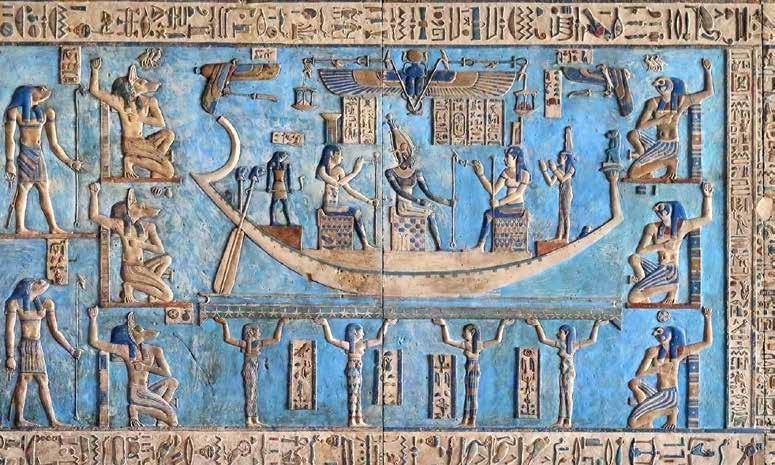
Akkadian also had an influence on international trade. A lingua franca allowed merchants and local authorities to know more clearly the obligations they had to each other. This was particularly valuable for merchants crossing territories as they could be issued with letters acting much like a passport that could exempt them from local taxes and allow them safe transit. The common understanding presented by a lingua franca saw developments in rules regarding seaborne trade. Akkadian has given us one of the earliest examples of bottomry: the code of Hammurabi from 1750 BCE outlines the rules that allow a merchant to pledge his ship’s cargo as surety for a loan, including procedures should an Act of God intervene. The extensive international relations we see in the Bronze Age are at the same time a symptom and a cause of Akkadian’s being a lingua franca.
The Island of Sardinia
24th September 2024
15th April 2025
23rd September 2025
Classical Sicily
14th May 2025
14th October 2025
The Peloponnese
7th October 2024
6th May 2025
22nd September 2025
Discover the Dodecanese
17th October 2024
3rd October 2025
Crete & Santorini –
Rise & Fall of Minoan Civilisation
7th October 2024
Crete – Introducing the Minoans
8th April 2025
7th October 2025
The Ancient Argolid 21st October 2025
Egypt – Highlights & Discoveries
24th September 2024
14th January 2025
9th December 2025
Egypt Encompassed
29th November 2024
10th February 2025
27th September 2025

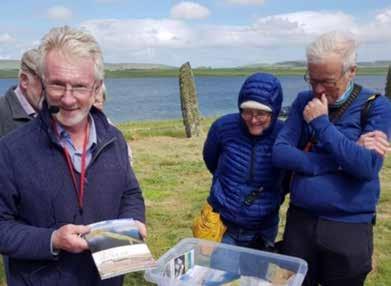
Where did you first go on holiday without your family/parents?
For Nigel, the 1969 German Formula One Grand Prix and for Barbara a post A-Level trip with three school friends to Jersey. As a couple we took a belated honeymoon a year after we married on a narrowboat around the Birmingham Canal Navigations before they became gentrified. Here the archaeology was more of an underwater type in removing shopping trolleys and other less salubrious items from the propeller of the boat.
Which time period or ancient civilisation fascinates you the most?
It is difficult to choose one particular period as we have a number of “hotspots”. Our interests include World War One, the Napoleonic Wars, Early Medieval Britain and prehistory. It seems that these are linked with an overall interest in the impact of mankind on the landscape over time and in different places and every new trip we go to adds to this. Occasionally we will deliberately choose a tour with a topic about which we know nothing, like the Etruscans with Oliver Gilkes and this has never let us down and has just added to our interests.
Can you name a site that lived up to the hype? There have been so many including the Catacombs below St. Peters in Rome, the rock art at Alta in Norway, Inis Mor in Galway Bay, the cave art of Rouffignac, the Byzantine Mosaics of Ravenna but, if pushed, it has to be the trip across the Atacama and Easter Island. Our first tour to see these ended after 4 days due to the closure of Chile’s borders as a response to the Covid pandemic. We eventually made a successful return 3 years and 8 months
What led to your interest in archaeology?
Both our fathers were interested in history and many a weekend or holiday was spent visiting castles, abbeys and prehistoric monuments. We met at university where Barbara read History and after graduating taught the subject, becoming Head of History and Nigel qualified as a chemical engineer and worked in the pharmaceutical industry. History and archaeology became a shared interest. Following early retirement, with Barbara being freed from the shackles of the Secondary National Curriculum of the time which didn’t think anything happened before the Norman Conquest, her interests moved backwards into the Early Medieval Period and then further into the Prehistoric. Nigel’s research into his family history took us on visits to the battlefields of World War One. Our first taste of practical archaeology was as members of the Nottinghamshire & Derbyshire Medieval Graffiti Survey followed by establishing and managing a National Lottery Heritage Fund financed community archaeology project in our home village. Working with a professional archaeologist we investigated a site which has evidence of use from the Iron Age through Romano- British and Anglo Saxon to the Medieval Period, by which time it was a site of Christian pilgrimage.
Nigel’s other interests include natural history, astronomy and photography with archaeology sites being brilliant for all three. As well as looking at geoglyphs in the Atacama, Nigel has photographed lizards and hummingbirds and in an Iron Age cemetery in Sweden he photographed Silver Studded Blue butterflies. The Atacama Desert also provided the opportunity to photograph the Magellanic Clouds, two galaxies not visible from the Northern Hemisphere and to visit the very large Telescope at Cerro Paranal. Fortunately, he usually wears a bright yellow jacket, so we don’t lose him!
later and, despite our feelings of excitement and not a little trepidation, the trip was exceptional. Paul Bahn said Easter Island would “blow our socks off” and he was correct as we returned home metaphorically barefoot. Can you remember a site that failed to live up to the hype?
Although we like to visit the main sites they are sometimes a bit less than you expect as well as being enormously busy. It is the smaller, off the beaten track surprises which often make the biggest impact.
If we had to nominate one it would be a Celtic Hillfort in Germany which comes to mind. After a long, hot climb up, the site was overgrown with trees and could not be seen. However, on the way down Nigel was able to get good close-up photos of a Map butterfly. So not a failure after all.
What is the most interesting historical figure you have discovered on your travels?
Rather than one individual we seem to look for the nameless ones. The unknown masons, architects and civil engineers who have built the Neolithic monuments, the Roman cities and fortifications and countless medieval cathedrals, the cave artists and their mysterious world and the unknown French soldier who carved the name of his regiment and the date 7 August 1914 in the Papal Palace in Avignon. We did some research and discovered that he would probably have died in action along with hundreds of his comrades just over two weeks later.
They may not yet be historical figures but the most interesting person we have found on our travels is “The Professional Archaeologist”. They may be the digger still out there doing the job like Nick Card on Orkney, Tertia Barnett in Sweden and Scotland, the writer of the books you need to read like Paul Bahn or working with museums or governing bodies like Peter Yeoman. All to a person have been fantastically knowledgeable on site and great entertainment at dinner.
Do you have a favourite item you always take with you when you travel?
This has to be Mr Mouse, a soft toy, who travelled with Nigel on his business trips and has now become an archaeomouse.
Can you tell us about one of your most memorable travel experiences?
We touched on this earlier and it has to be our trip to Chile and Easter Island in March 2020. We were inspired to do this trip after a chat during dinner with Paul Bahn on a Rock Art of the Pyrenees trip when Easter Island came up in conversation. This was not somewhere we had considered but our interest was piqued, and a booking was made.
March 2020 arrived with the spectre of Covid becoming ever present but the Foreign & Commonwealth Office advice was that it was safe to travel to Chile so off we set with Yamina Labed as Tour Manager, Paul Bahn and four other travellers. We were met by Jaime Droguett in Santiago and stayed at the wonderful Hotel Magnolia. The next day we flew to Arica in the Atacama Desert near the Chile/Peru border. The morning was spent looking at Chinchorro Mummies and petroglyphs. Whilst photographing the latter we spotted Yamina taking a phone call and immediately feared the worst. We were correct because we had to leave Chile quickly as its borders were to be closed two days later. The quick actions of Jaime and his wife got us back to Santiago early the next day, but we were unable to get on that day’s BA flight back to London. Hotel Magnolia re-opened to gives us sanctuary and after a nervous night, the next day BA put us on standby and at the last minute confirmed our seats on the last flight out. What has been so great is that alongside us, two of the other original four travellers plus Paul, Yamina and Jaime returned in November 2023 and completed our adventure.
Where are you travelling to next?
As soon as the brochure arrives we look for what is available in the coming year. This year has been no exception in that we are booked on three tours: Prehistoric Malta & Gozo, Rock Art of Portugal & Spain and Turkey: From Çatal Hüyük to Göbekli Tepe, our first venture into the Eastern Mediterranean.
As we have been writing this so many other special moments have been remembered so we would like to send our thanks to all the experts, managers, head office staff, local guides and fellow travellers who have all contributed to our lovely experiences.
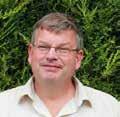
Who are some of your academic or archaeological heroes?
My first hero might seem odd in that he was a bit of a fraud in some respects and a complete egomaniac, but I admire Heinrich Schliemann as the founder of archaeology. He often made the findings fit his ideas and that much of what he did was wish fulfilment, but he still embodies what archaeology is and he helped to put the science on the map. His passion and his vision, coupled with his uncanny ability to get funding for his excavations, have been the inspiration to so many.
Another of my heroes is Edward Gibbon, who might be Britain’s greatest ever historian, after the Venerable Bede and has proven to be remarkably accurate despite the fact that he was writing in the 18th century. While he was of his time, Gibbon studied and absorbed an impressive amount. He established a narrative whose influences are still felt today, namely the decline and fall of the Roman empire.
My third hero is another man with an ego, Mortimer Wheeler who was instrumental in creating the science of practical skills used in archaeology in the UK. While pioneers like Giacomo Boni in Rome helped develop the stratigraphical method, Wheeler was much more systematic. What is really significant is that almost everything he proposed has been proven to be wrong. What is important here is that other researchers set out to overturn his ideas, his work inspired them, and in a way being proved wrong is like a final accolade! It advances the argument onwards. Wheeler was instrumental in establishing what the debate was.
Lastly, when it comes to contemporary archaeologists, it is harder to determine as there are so many good examples. One whom I do admire is Daniele Manacorda who has been involved in a number of projects in Italy, including the excavation of the Crypta Balbi in Rome which stands as one of the finest bits of urban archaeology in Europe. It offered a proper stratigraphical analysis of the area around the Crypta from Imperial Rome to the mediaeval and fascist periods. Manacorda followed in the footsteps of his colleague, Andrea Carandini, and exemplified a proper archaeological approach which I greatly admire. Also it is good to recognise that UK archaeology is not the be all one might like. When I take British archaeologists around Italian sites, I often perceive a certain disdain and shaking of heads about the practices displayed and with it a dogmatic and inflexible, not to say arrogant, approach.
What are some of your favourite sites and/or museums and why?
There are two sites which stand out as my favourites, both classical. The first is the site of Ostia/ Portus, whose sheer scale and whose buildings give us a far better idea of what ancient Rome must have looked like than Pompeii, which is far less typical. The apartment buildings in Ostia, some of which survive to 4 storeys, give us a great idea of what living in ancient city must have been like. Then there is the adjacent and often closed Portus, the later extension of Ostia. First built under Claudius and expanded under Trajan, who constructed the hexagonal basin, the site is all the more evocative because it is only partially excavated and is still overgrown, meaning that you occasionally encounter deer or wild boar, making it resemble a Piranesi etching. My other favourite site is Nicopolis in Greece. Founded by Augustus who decreed the construction of a special sanctuary in which games would be held, it celebrated his victory at Actium over Antony and Cleopatra. As an imperial city, money was poured into it, to the extent that I think Augustus may have regretted his founding it! It includes a double ended stadium and very good theatre, as well as an altar embellished with rostra, built where Octavian’s tent was pitched when he was overlooking the Egyptian ships in the battle site. Not far from the site, which is superbly maintained, is the aqueduct of Agios Georgios which is a picture perfect example of a Roman aqueduct, almost as classic as the Pont du Gard.
Which little known archaeological or historical site should be better known in your opinion?
One of the museums which I really like but is generally neglected by others is the huge Museo della Civilta Romana, Rome, created for the 1942 World Fair which never took place. Nothing in the vast complex is real in the sense that it houses copies of artefacts or models of buildings and cities; it is, in a sense, the first virtual museum. You can see casts of pots, reconstructions of siege machines, a full-scale cast of the Arch of Septimius Severus, the Temple of Augustus from Ancyra which contains the largest fragment of Augustus’ Res Gestae, as well as buildings which no longer exist. There is also an extraordinary model of a Rome, called the Plastico di Roma Imperiale, which is maybe half the size of a football stadium and was used by Ridley Scott to make Gladiator.
For me, one of the most evocative sites I know is Ayaz-Kala in Uzbekistan, which is a series of forts dating from the Achaemenid period to the 14th century and the Mongols. I visited the site in mid-February when the wind was freezing and the mud bricks, the main building material of the area, were frozen like ice cubes. Gazing over the endless oceans of grass, it came to me that I was standing at a place where Herodotus ran out of words, at the edge of the known world, beyond which was the land of centaurs and Amazons. It sent chills up my spine, for several reasons!
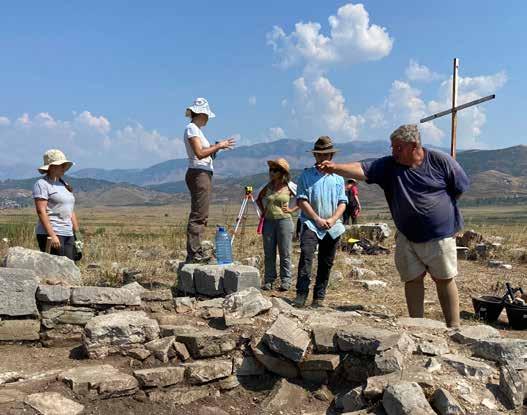
What are some of the challenges facing ancient sites today?
This is fairly straightforward. There are always going to be normal problems of depredation from detectorists and sites degrading from being exposed. However, far and away more challenging is climate change, which is a challenge on a scale we haven’t yet seen. We are facing the submersion of all kinds of sites, such as those on the Bay of Naples or those on the Eastern coast of England. We are also facing the prospect of tidal surges weakening sea defences and washing away sites; I am thinking about Butrint, or Nicopolis and Cnidus. I can’t see Lepcis Magna surviving, just to give an example. We are lucky to be living at a time when these coastal sites are still around, and I fear for the future.
What are some of the best and worst moments in your guiding career?
Best moments in guiding come when you can see people getting what you’re saying, what you’re trying to get at. You can see the penny drop. There was an occasion when an American lady kindly wrote to Andante to say what a great time had had on tour, saying that it was a dream of hers to stand in the forum of Pompeii. It made me realise again, through her eyes, what a privilege it is to see such wondrous sites; sometimes you can be too blasé. On another occasion, I encouraged a guest – perhaps against my own interests and the travel company – to deepen her studies in the ancient world and to travel on her own. Knowing that she went on to get a Masters and to learn Latin is wonderful. As for the worst moments, maybe it’s best to focus on the good moments and drawl a veil over the negative. In my many years of guiding, I have had moments I’d rather forget, where maybe a site was unexpectedly shut, or the food was not the most delicious.
If you could invite any ancient character (either fictional or real) to dinner, whom would you invite and what would you eat?
I would invite the emperor Diocletian, a hero of mine because he was the only emperor to have the guts to resign from his position, even after having established the foundations of the empire for the next several centuries. I wonder, though, whether he would be a good dinner guest or whether he would be too bureaucratic and dull. Nonetheless, I would enjoy hearing what he had to say. For dinner I know what we would have: cabbage, given that he famously retired in Split in order to become a cabbage farmer. We would have all sorts of cabbagy food, including cabbage soup, japrak, a kind of Balkan dolmade made with cabbage leaves.
23rd September 2024
30th April 2025
15th October 2025 Imperial Majesty in Ravenna & Venice
30th October 2024
29th October 2025
Rome
21st March 2025 Albania 19th April 2025
THAT
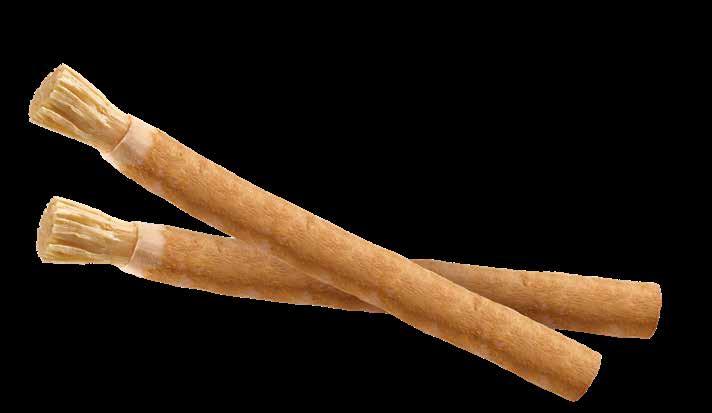
Romans were surprisingly modern in their dental practices in many ways. For example, they used narcotics as anesthesia for the oral surgeries they performed and used dental implants from as early as the 5th century BC. Other dental practices, however, often seem a good deal more foreign to us. Pliny the Elder provides several treatments for toothache, which include catching a frog at midnight and convincing it to take the pain away from you, as well as rinsing your mouth with a concoction of seeds added to hot water which would induce worms, thought to cause cavities, to wriggle out of your teeth. More interesting, even, is their notion of dental hygiene which included using abrasives, such as crushed bones, broken bricks and pumice, to whiten teeth and to use urine mixed with an abrasive and goat’s milk as toothpaste. Portuguese urine was thought to be particularly strong and, therefore, particularly effective and sought after. In order to counteract the noxious smell of urine, aromatic herbs were sometimes added. Something of these practices is captured in Catullus’ 39th Carmen which describes the ever-grinning Egnatius as being a Celtiberian (interestingly perhaps Portuguese) who fanatically rinses
Those Ancient Greek babies lucky to survive birth were celebrated on the day in which they were born with presents and visits from relatives. In the Archaic and Classical periods, this would be the last time their birthdays would be celebrated. The only births that were commemorated on a regular basis were those belonging to gods: the twins Artemis and Apollo were honoured the 7th of every month, while Poseidon was memorialized the 8th of every month. These days were the focus of rites and feasts for those deities. Starting with the 4th century, the birthdays of important people occasionally were celebrated, usually as they coincided with days commemorating gods. For example, following his death, Plato’s birthday was marked on the 7th of the month as it was Apollo’s day. Hellenistic kings from the Seleucid and Ptolemaic dynasties, who were associated with the divine, were also the recipients of birthdays. Interestingly, modern Greece links each day with a saint or Biblical character and contemporary Greeks celebrate their onomastiki eorti, or name day, on their saint’s day; these are often as important as their birthdays. Unwittingly, they are following in the footsteps of their forebearers who associated birthdays with gods.

Not only was Cyprus the centre of the copper trade in the Bronze Age but it appears to have been important in the trade of opium throughout the Mediterranean in the same period. Base Ring juglets produced in Cyprus and found throughout the Mediterranean appear to have been used to transport opium, something confirmed recently by residual analyses done on vessels of this type found at the Tel Yehud excavations in Israel, where there is also evidence that opium was diluted into larger storage jars for more extensive usage.
It was during the late Bronze Age, when Minoans celebrated a goddess of the poppy and when it was referred to as the joy plant in the middle east, that Egypt started using the papaver somniferum. Believed, in antiquity, to have been introduced to Egypt by the god Thoth, evidence of poppy comes from tombs, such as Deir el Medina 1389. It was used as a sedative, particularly when mixed with wine and beer, and an analgesic, as well as for treating diseases such as erysipelas and colic in infants. Whether it was used recreationally is another question. The shape of some jar openings suggest that opium may have been inhaled, like a pipe. Whether the drug was inhaled or ingested for recreational purposes is another matter, though what appears to be an opened opium flower is depicted on the Lady Taparet Stele now in the Louvre, suggesting that it may, at least sometimes, have been used to induce a religious experience.
Although modern spectacles wouldn’t be invented before the seminal work on optics by the Muslim scholar Ibn Al-Haytham, born in Basrah in the 10th century, Romans had a basic understanding of the way in which glass can be used to magnify objects. Seneca, renowned for his work on light refraction and optics, used a glass bottle filled with water in order to enlarge texts, while Roman glass makers produced reading stones, small glass spheres, which were placed on top of texts in order to make them bigger. It is the emperor Nero, famed for his ostentatious lifestyle, who provides us with the most famous use of glasses in antiquity. In his account on precious stones, Pliny the Elder reports that Nero watched games (pugna) through a concave emerald, presumably to counteract the glare of the sun and because he was shortsighted. The word he uses here for emerald, smaragdus, is used for various green stones, so it might have been olivine rather than emerald that Nero used. Nevertheless, there can’t be many people in history who would have had the audacity to use semi-precious stones as spectacles. One muses whether the emperor, so keen to perform to an audience, was thinking of attracting attention in a novel way. Whatever his intentions, this use of green stone to see through may in a sense constitute the first known use of sunglasses. We next hear about green glasses in the 18th and 19th centuries when personages as far apart as Poe’s detective Dupin, Wordsworth and Thomas Jefferson are known to have worn them. Whether or not Nero used this stone, he was ahead of his time.

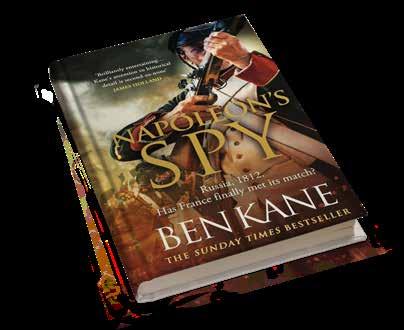
AUTHOR: BEN KANE | Chosen by Dr Eireann Marshall

Ben Kane is a best-selling author who has produced a number of historical novels ranging across an astonishing range of epochs and personalities, from Spartacus to Richard the Lionheart. His novel on Napoleon’s ill-fated Russian campaign, Napoleon’s Spy, shares characteristics with his previous works, notably carefully crafted characters and punctilious research.
Kane has created a vivid sketch of one of the most dramatic and destructive campaigns in history, which is conveyed to us through the eyes of an ordinary man with a gambling addiction who has been blackmailed into service; a neat device which allows us to participate in these awful events. The main character of Napoleon’s Spy, Matthieu Carrey, is fundamentally flawed and yet, at the same time, someone to whom we can entirely relate. It is through him that we experience Napoleon’s disastrous Russian campaign, where we learn of the scale of the French operations and ambitions. It is precisely because Carrey is an ambivalent character, more English than French and more intent on survival than on victory, that we are drawn into the action and grasp the enormity of the tragedy. With great aplomb, Kane sets the scene for the carnage resulting from the badly timed and executed advance into Russia, with untold numbers of bodies and dead horses left strewn along the road. Even more impressive than Kane’s ability to evoke large scale events, perhaps, are his incidental characterizations, such as depicting Napoleon’s notoriously bad horsemanship. And he knows when to let the sources speak for themselves - some of the accounts are so vivid and moving you feel you are dipping directly into history itself.

AUTHOR: RICHARD HODGES | Chosen by Oliver Gilkes
Knidos is a site well known to anyone who has travelled in western Turkey. Beautifully situated in Caria it was a colony of Sparta and was once home to the famous sculpture of the naked Aphrodite by Praxiteles. Richard Hodges (once my boss) has written an account of an archaeological expedition here which took place in the 1960s, led by the extraordinary Iris Cornelia Love, the last of the Guggenheims and a New York Socialite. Hodges’ account is very much seen from the point of view of a young and enthusiastic archaeologist in the making and will be familiar to anyone who has been in similar circumstances. Against a background of Love’s search for the shrine of Aphrodite and Praxiteles’ lost masterpiece, Hodges paints a wonderful picture of the excavation and all its oddities -Iris Love water-skiing in the bay below, the cast of diggers, many soon to be well-known and the illustrious site see-ers who came to visit. Other dramatis personae are the vital and sympathetic local workforce, experienced, kind, and with their own distinct and powerful personalities who were employed to do the actual work and, in many cases, knew a great deal more then their young English ‘supervisor’. The sociology of these projects can be curious, full of new things, exciting discovery and romance, all set, in this instance, in an idyllic location. Add in the dangers and difficulties, odd food, ghastly gastric infections, snakes and weary travelling and it makes archaeology into what it ought to be everywhere, an adventure.
This is a personal account, but it does have a significant message and meaning. In a world where xenophobia and mistrust seems to proliferate and where international projects are seen as irrelevant and extravagant the ability to introduce disparate groups and have them mix and learn from each other (because the learning curve on both sides is huge) is invaluable above and beyond any purely academic gains; because investigating the past overseas really is a foreign country and they do things differently there. It is more important than ever to understand this.

THE REST IS HISTORY GOALHANGER PODCASTS | Chosen by Mary Reynolds
Launching in 2020 The Rest is History podcast surprised its hosts, Dominic Sandbrook and Tom Holland, and its history loving audience, by not only becoming the world’s most popular history podcast in a matter of months, but also by regularly appearing in top 20 podcast charts in all genres of audio downloads. This is no mean feat when millions of shows are released globally every week.
The two authors come from two very different ends of the historical spectrum. Tom Holland is the author of several books focusing on the classical world including Rubicon: The Triumph and the Tragedy of the Roman Republic, Persian Fire, and Pax, the history of Rome’s golden age. Dominic Sandbrook is best known for his books covering British history from the 1950’s to the early 1980s which include Never Had it So Good, State of Emergency and The 70s. Their contrasting viewpoints, often rooted in their disciplinary backgrounds, prompt listeners to consider multiple perspectives. To quote Tom Holland, “I think the fact that we are coming from opposite ends of the chronological spectrum does give us a different perspective…And though Dominic and I have been standing in a different place, we catch each other's reflections. That's what's been so interesting and maybe that's what people like.”
The podcast’s popularity is often attributed to the humour and occasional silliness of its good-natured co-hosts, its ethos as far removed from the monotonous lecturing of an old school classroom as you can get. But don’t be fooled by the bants, this podcast tackles a huge range of topics from the fall of the Aztecs to Serbia: the birthplace of Civilisation, with surprising depth and nuance, presenting big ideas without losing wit or pace. Discussions encourage critical thinking, challenge traditional narratives and spark intellectual curiosity.
With over 600 episodes to listen to there are plenty of historical subjects to dip into but a particular favourite of mine is their 4 part special on the history of holidays. From Romans partying on the Bay of Naples to the rise of mass tourism, these four lovely episodes discuss Byron, Boswell, Butlins and Benidorm and everything in between.
www.goalhangerpodcasts.com/the-rest-is-history




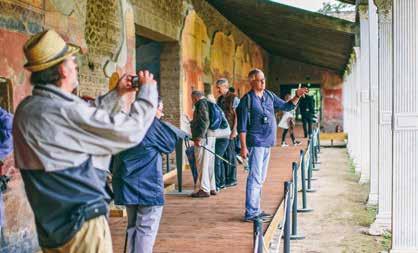
No one does archaeological holidays quite like Andante, the first specialist UK operator to go beyond the surface of cultural travel, to dig deeper into the past and create unique explorations of some of the world’s most important sites. From the relationships we have with local custodians to the way travelling with an expert enhances the experience, and from 24-hour support from our team while you’re on tour to the careful thought that goes into each itinerary. Trust Andante for your next ancient world adventure and travel with the best.
With maximum numbers of 18 on every tour, you can enjoy the sociability of travelling with people who share your interest but in a group small enough to allow for ease of access and quality time with your Guide Lecturer. We can travel with more flexibility and enjoy more of those spontaneous encounters which are simply not available to travellers on a typical group tour of 40 or more. Regardless of whether you are travelling with friends, with a partner or solo, rest assured you’ll find a happy, informal ambience on our tours and a healthy respect for the good things in life.
The price you pay for your Andante Travels tour represents excellent value for money. With most aspects of your tour included, from return flights and entry to all sites as per the itinerary, from tips to treats and – more often than not – wine with dinner.
There is very little you will need to budget for on holiday except souvenirs and drinks at the bar.
To secure your first choice of tour date at the best price, we strongly recommend you book as early as possible.
If you are interested in joining one of our tours and want to know more, please do give our Specialist Travel Executives a call today. They are ready to help with all of your questions.

